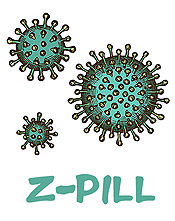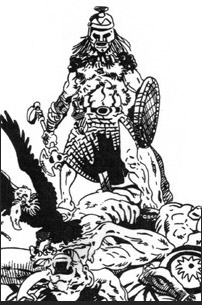I have recently been asked about how long canned food can stay edible, meaning not going bad. I do not know what the nutritional effect is on long-term canned food storage.
I did numerous store sets and resets and thousands of audits of shelf section worked by lazy slackers who never rotated food put in their care. This was like being an archeologist and fascinated. I would take long out of date cans and eat the contents. I did not fear this because I had eaten WWII and Korean War vintage C-Rations and K-Rations as a teen, buying these at Pete’s Army Surplus store in Washington County Pennsylvania in the late 1970s. Beans and franks were good and the chocolate nut roll was mighty dry…
Below are things to look for among cans long in storage. I recently audited a Mormon pantry and found one “pin hole” can and had to throw it out.
Pinholes:
Through damage in handling or defect in manufacture a small hole may be found in a can, out of which some of the contents will ooze and foul the shelf and then eventually dry and leave a husk of a can around shrunken desiccation. If your storage shelf has some unexplained sticky stuff on it search and you may find a pinhole can that has leaked.
Swell-heads
Usually when a can is compromised through shock or time and does not have a pinhole, it will begin to swell and then eventually burst or become a pinhole can. Discard any can that does not have a perfectly flat or convex top and bottom.
Pop-top
In home canning [bottling] with jars and in working jars on the shelf, one can tell when the seal has been recently compromised if you can press the lid and hear a click. There is even a button painted on many commercial jar lids to show you visibly that it is a pop top. Initially breached cans will have this pop top until they turn into swell-heads or pinholes.
Cans have advantages over bottles in that they deny light, which is a major cause in the degradation of fresh and preserved food.
Below, from weakest to best can design, find:
-5. Zip tops, like sardines, new types of spam, with rounded bottoms and pull-tab designs, fail at a high rate. As usual convenience and quality are at odds.
-4. Zip top cans, like the old spam design, with a rim on the bottom, hold up better than the zip tops with rounded bottoms.
-3. Beveled cans, with rounded bottoms [which means most current canned goods] were designed to permit stock clerks to more easily stock cans on shelves that became too big when cans were reduced from 16-ounce 303 cans to 15-11 ounce cheater designs. These beveled bottoms are made of thinner metal, I think aluminum. With sardines, you want the 6-8 ounce oval can with rimmed top and beveled bottom.
-2. Cans with rims on top and bottom, like the big V-8 cans and pineapple juice cans, which are a size of can that you don’t want to stack and have more area to develop problems implicit in beveling with lighter and thinner metal, hold up very well. You can still get some sardines in little tomato paste size cans, with rims on top and bottom.
-1. The #1 canned storage food is canned corned beef, with rims on top and bottom, which stack because the top is smaller than the bottom and fits inside of it, and uses an external key to turn a metal tab rim and peel the can away from the meat. This does not last as long as the double-rimmed can, but is the only can design in general use for red meat.
To review, cans are weakened by:
-Moisture
-Impacts
-Dents
-Zip-tops and pull-tabs
-Stackable rounded bottom designs
-And finally, Time.
The Most Underutilized Plant Foods
The Crackpot Asks Buffalo Bob What Plants Have Fallen by the Aspirational Wayside
Notes from memory of a discussion.
-Stinging nettle once used to make tea in the high country
-Apples, pears, plums and other suburban fruit trees which are left to rot on lawns by residents who buy these same fruits in grocery stores
-Elderberry, and other berries, just used as a shrub and kept to feed song birds by suburban-minded rural folk
-Dandylion once brought in as a food source, used as salad greens and to make wine and now regarded as a weed that is poisoned to make way for grass that cannot be eaten. Leaves, stems and roots can all be used.
-Other weeds, such as thistles with edible roots that are not even composted when pulled, but sent to a dump in a plastic sack











Hawthorn, both seeds and leaves are edible straight off the tree and the red pith can be dried and ground into a flour. Acorns need soaking in running water for a couple of days to remove the tannin (find a spring) but then make a poor man's chestnut. Young acorns harvested while still green are borderline edible anyway, but were almost never worth the trouble of picking.
Thanks, Rob!